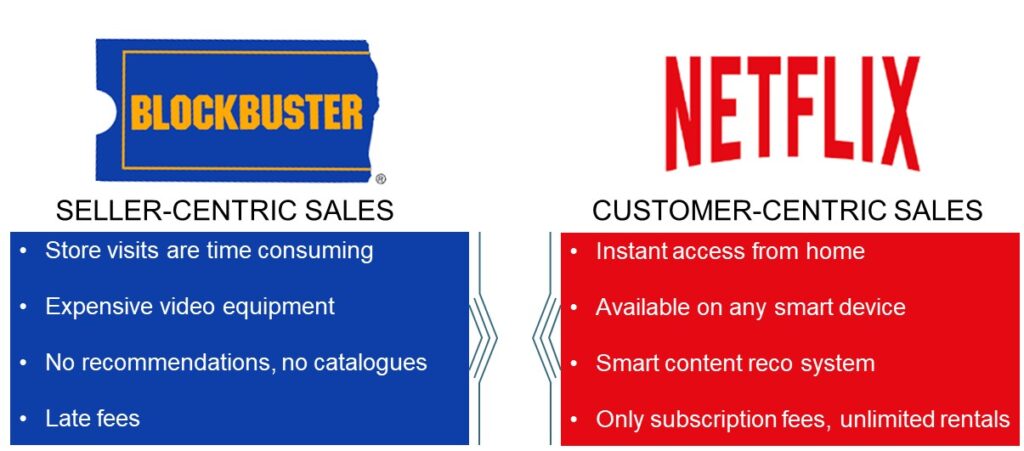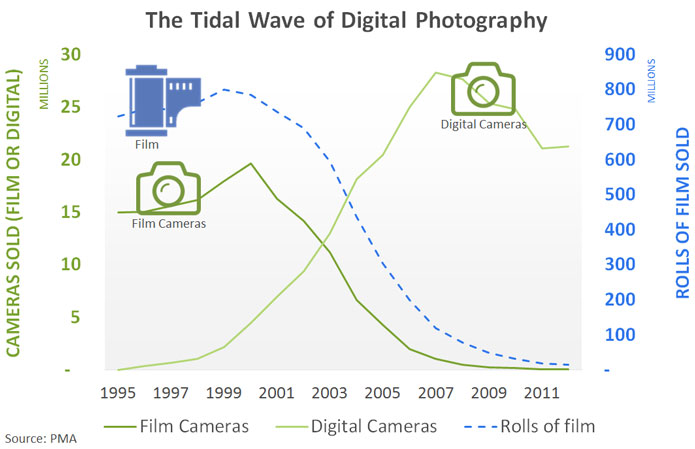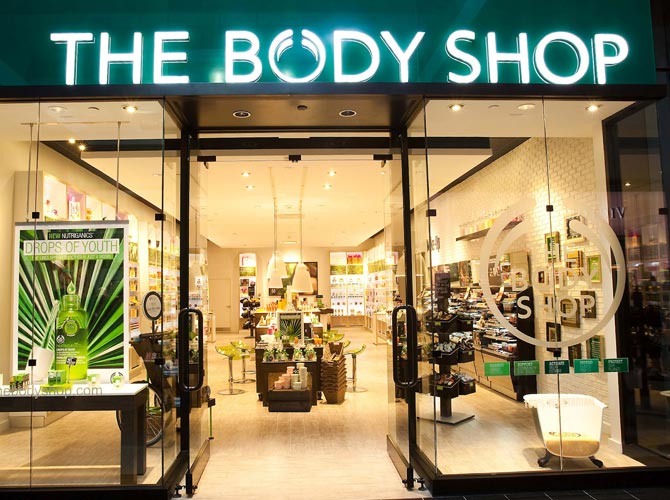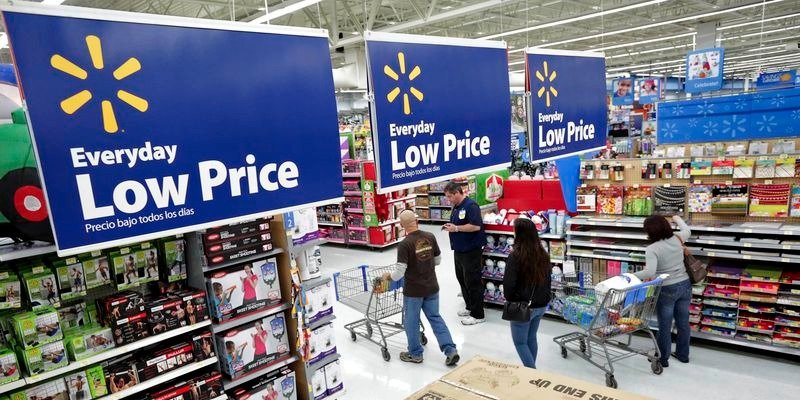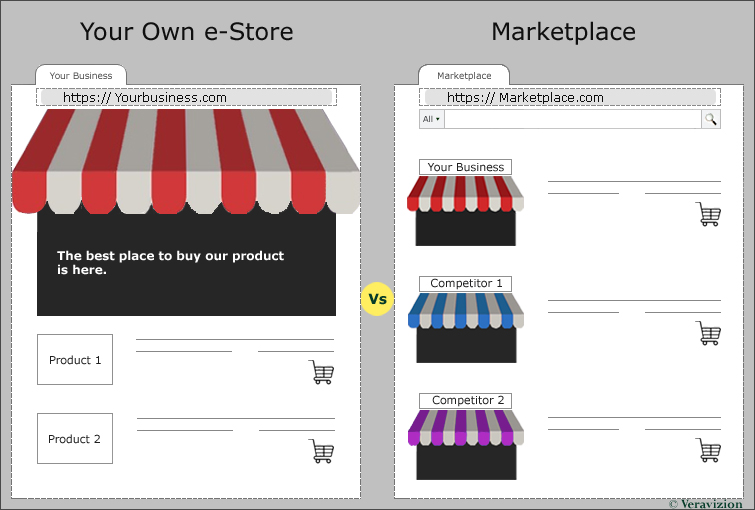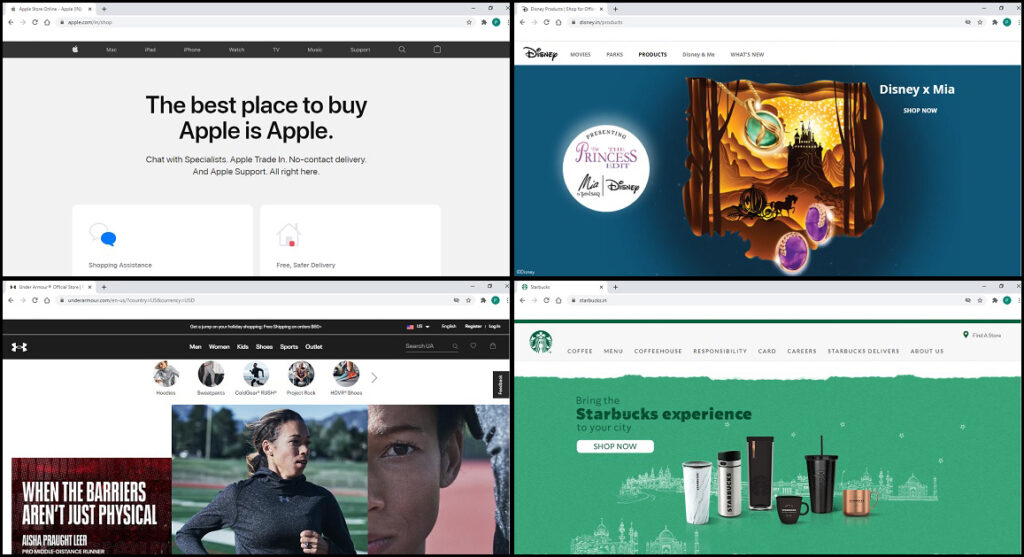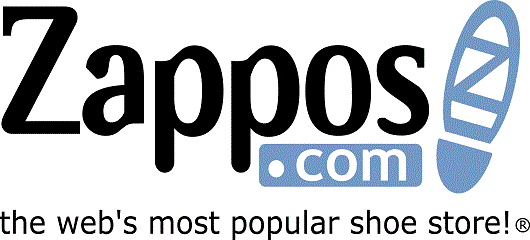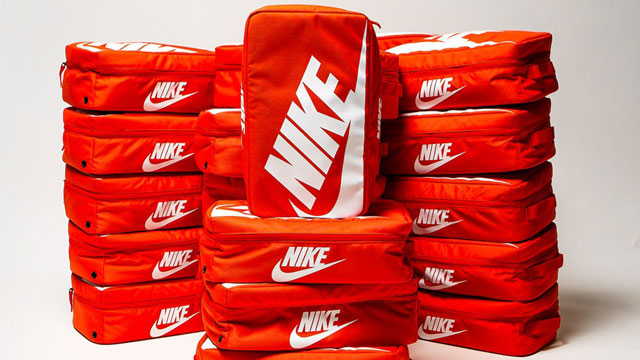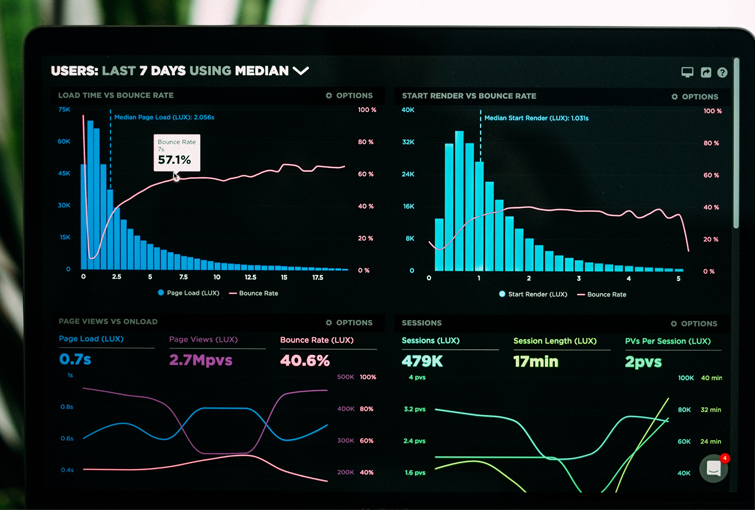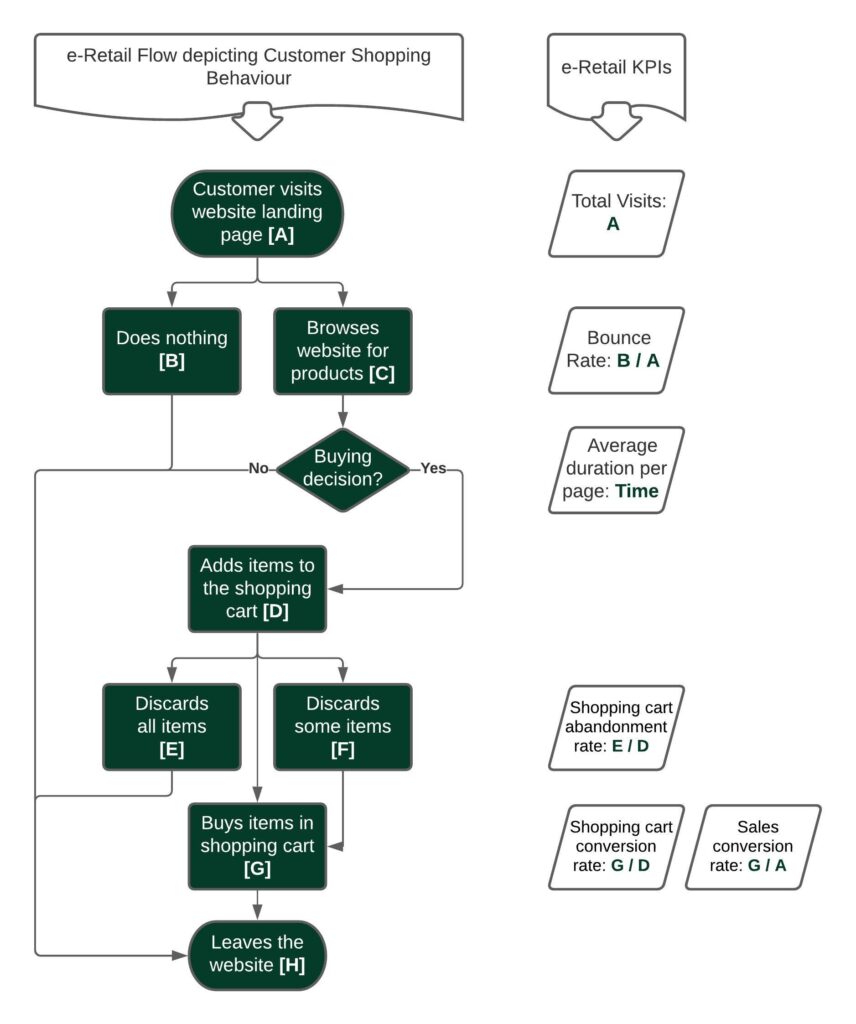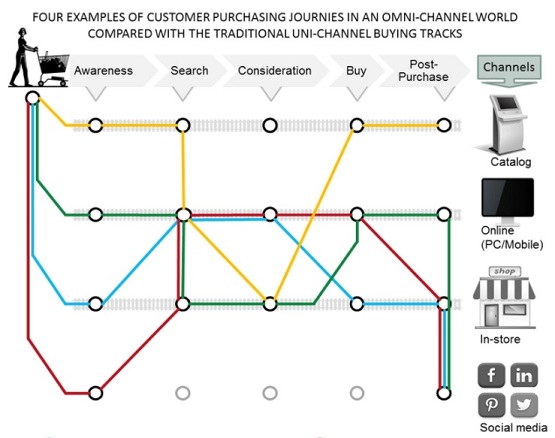This Veracle explains why customer-centric sales is the new competitive advantage.
Earlier, we recognised the need for a new frontier for sustainable competitive advantage.
We explored if product differentiation can be that frontier.
The car, coffee, and cosmetic examples illustrate that product differentiation is ephemeral. It has become transient. It is now more a hygiene factor than a source of sustainable competitive advantage.
So, if product differentiation is merely a hygiene factor, how to compete in the cut-throat marketplace?
To answer this question, let us go back to basics.
Consider our typical sales situation. Three entities are present here: the seller, the product (or service), and the buyer (or customer).
Here, many salespeople focus on the first two:
- How they as seller are different
- How their product is different
This is the seller-centric approach.
It focuses on sellers and their products.
It reminds me of a captivating scene in the movie The Wolf of Wall Street. When Jordan Belfort (Leo DiCaprio) asks some conference attendees to “sell me this pen”, they take this same approach.
However, this seller-centric approach is suboptimal.
It may work in certain situations. But it isn’t ideal for building long-term customer relationships. Hence, it is not sustainable.
That brings us to the third entity present in the sales process – the customer.
Today, the customer has access to a lot more information at the touch of a screen. They can easily compare products and prices. If they don’t like something in a product, they switch just as easily. They know what is best for them.
In short, customers want to be in control of their buying process.
The problem is, the seller-centric sales does not do that.
A working strategy is ‘CUSTOMER-CENTRIC SALES.’
What is customer-centric sales?
Customer-centric sales is the approach that puts the customer’s needs and purchase motivations at the centre of the sales conversation.
In customer-centric sales, you don’t try to get people to buy your stuff they don’t need, by dwelling on seller or product differentiation.
Instead, you focus on knowing customers better. Make it data-driven. We call it developing customer intelligence. You strive to understand customers at a much deeper level.
Generally, salespeople know which customers buy their products?
But many times, they do not know ‘WHY do those customers buy their products.’ Unfortunately, this is more common than we think.
The key is to know the real reason and motive behind the purchase.
But, why is THE WHY important?
Because, customer’s reason to buy your product is likely to be different from your reason to sell it.
And guess what?
Your reasons to sell do not matter; while customers’ reasons to buy do.
This may sound harsh. But it is true.
You may be selling dog food because it is so good in quality that you can also eat. Whereas, the customer may be buying it because it is cheap and convenient.
You may be selling expensive maple wood furniture because the wood is durable and sourced from hardwood forests of North America. The customer may be buying it simply because it is lighter.
You may be selling homemade food as you have fresh organic homegrown ingredients. But the customer may be buying your homemade food because they can get it customised.
The point is this.
Customers buy anything for THEIR own reasons, not yours.
Businesses that get this insight embrace customer-centric sales approach and thrive.
Others that fixate on their own seller-centric differentiation without concern to customers’ reasons struggle.
Consider examples of a few companies where a seller-centric sales approach failed them.
Example 1: A video rental company closed because of not knowing their customer’s why.
You guessed it right.
Blockbuster was in the business of ‘renting out DVDs’. Their competitor Netflix also started ‘renting out DVDs’ in 1997.
Blockbuster’s model was seller-centric. It focused heavily on high street retail sales. Apart from other things, they maximised revenues by charging late returns (of DVDs). Blockbuster made 16% of their revenues in late fees.
On the contrary, Netflix pursued customer-centric sales strategy and studied customers. They enabled consumers to watch videos for a flat monthly fee without worrying about returns.
Blockbuster’s seller-centric model frustrated customers. Netflix’s customer-centric approach eased customers about returns.
Meanwhile, faster internet allowed online streaming. It enabled customers to watch videos online. Ergo, customer buying preferences changed. They stopped going to stores altogether.
As a result, blockbusters seller-centric model collapsed. Whereas, Netflix re-aligned with customer’s watching preferences by offering videos online on-demand.
Eventually, Blockbuster ended up bankrupt. And Netflix emerged as one of the top ‘over-the-top content platforms.’
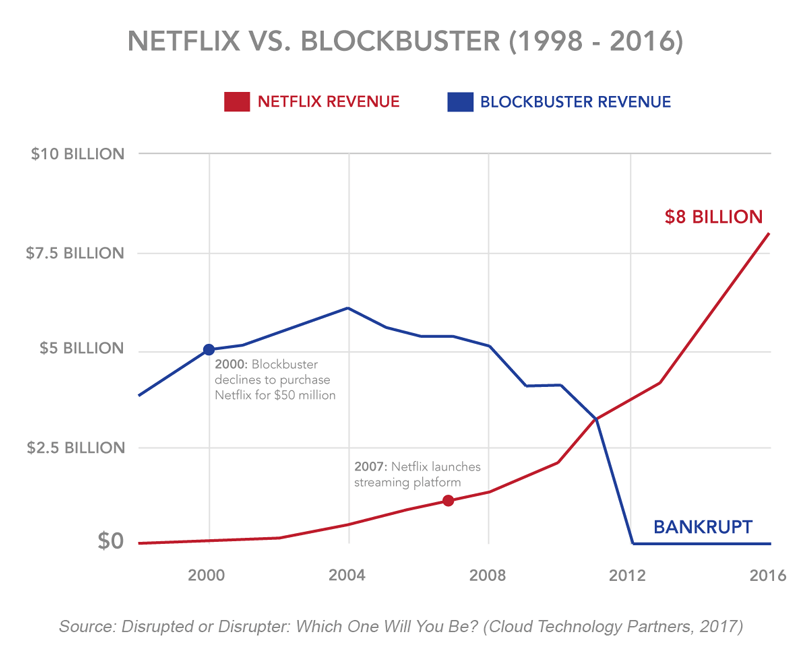
According to the UK CMO of blockbuster Bryn Owen, Blockbuster’s sales-driven model did them in.
Example 2: “Share memories, Share life.” A Kodak moment (in 2012) that saddened everyone.
George Eastman, Kodak’s founder, invented roll film in 1888.
Kodak was primarily in the photographic film business. They prided on their silver-halide film technology.
Listening to customer demand, Fujifilm started selling film in 1934.
Meanwhile, the digital revolution started in the 1960s.

Source credit: James Rajotte for The New York Times
By the late 1990s, the demand for photographic films dropped in line with the growing popularity of digital cameras.
The rapid spread of digital technology disrupted the photographic equipment industry.
Fujifilm invested in knowing customer’s changing preferences. They adapted to this shift by switching to digital lines of business.
Despite that, Kodak focused on film.
Not just that.
Kodak had acquired a photo-sharing site called Ofoto in 2001. If they were customer-centric, they would have been the pioneer of something like present-day Instagram.
Instead, Kodak used Ofoto to try to get more people to print digital images.
In the end, Kodak filed for chapter 11 bankruptcy in January-2012.
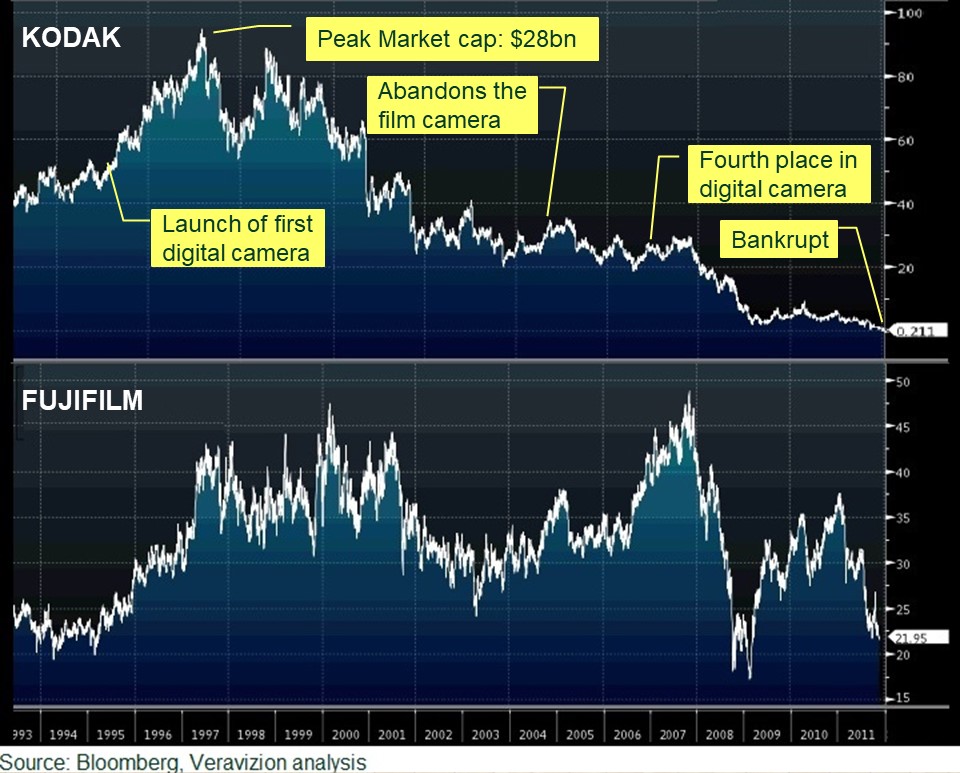
Don Strickland, a former vice-president of Kodak, said: “We developed the world’s first consumer digital camera but we could not get approval to launch or sell it because of fear of the effects on the film market.”
Once the world’s biggest film company, Kodak became a posterchild for failure due to not being customer-centric.
Unfortunately, these aren’t isolated examples of companies stuck with seller-centric sales approach. GM, Nokia, Xerox, JCPenney, Palm, Sony are but to name a few.
Building a new competitive advantage with customer-centric sales
Building a true competitive advantage requires implementing customer-centric sales strategy. This strategy has these three benefits:
- You give customers, control in their buying process
- Customers get what they want
- It is sustainable
Most internet-age companies that are growing rapidly are customer-centric.
Amazon obsesses over customers as they want to be known as Earth’s most customer-centric company. Everyone knows about customer-centricity of Google, Nordstrom, and Southwest.
Companies like Lululemon, John Lewis, and Target have invested in developing customer intelligence to be customer-centric.
So, how are these successful businesses pursuing this deliberate strategy of customer-centric sales?
We will discuss in the next Veracle.
Related Posts:
- What does Digital Maturity really mean?
- How Deliberate Strategy Can Be the Working Strategy! (Most popular)
- Competitive Advantage: do you have one? Is it sustainable?
<– Product Differentiation: Why it isn’t enough anymore
Startup Pitch: Are You Ready for the Shark Tank? (External: The Hitavada) –>
If you liked reading this article, then please subscribe to our blog – Veracles. That way, you can receive interesting insights in email.
Also, please do follow Veravizion on LinkedIn, Twitter or Facebook to receive easy updates.

